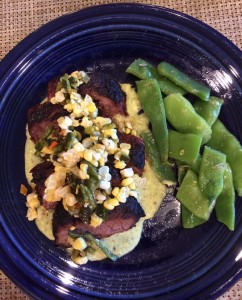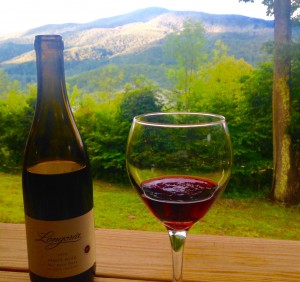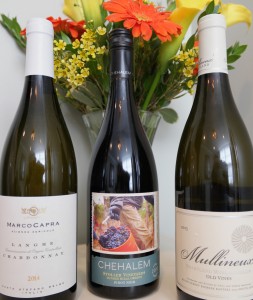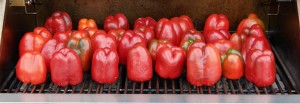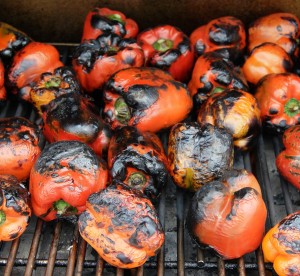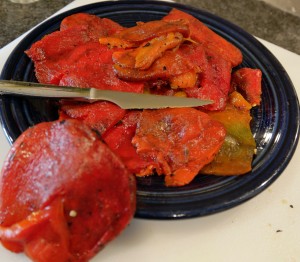I suppose I have always been destined to appreciate the fruit of the vine though I certainly had no inkling when my go-to wine selections were enclosed in half or full gallon screw cap bottles, and where quality took a back seat to price and quantity.
To this day, I remember the first cork-finished bottle of wine I ever purchased to accompany a steak dinner at –believe it or not – the WVU Mountainlair restaurant on the campus of the old U. I was trying to impress a young lass with my savoir-faire by selecting a bottle of Mateus Rose’ to accompany what would turn out to be the leather-like slices of prime rib we had both ordered.
And while the wine and meal were forgettable, my date (and now wife) and I have always had a special fondness for rose’. Remarkably, Mateus is still being produced in Portugal, and remains a very popular aperitif wine with its characteristic fizzy and slightly sweet raspberry and cherry flavors.
Although I continue to buy and use rose’ throughout the year – even sometimes to accompany Thanksgiving dinner– there is no better time to open a bottle than in the heat of the summer. I have recommended a few for your consideration below, but first let’s take a closer look at the “how, where and when” of rose’. It is definitely no one trick pony!
[caption id="attachment_1237" align="alignleft" width="170"] Perfect on the deck with grilled foods
Perfect on the deck with grilled foods
I know that some of you may turn your nose up at this (sometimes) pink wine, or think of rose’ as a one-dimensional, inexpensive and sweet wine like the aforementioned Mateus or even white zinfandel. But most are produced classically dry (which means they have less than one-percent residual sugar).
Well, you may also be surprised to know that rose’ is made in just about every fine wine region using just about every red grape imaginable from cabernet sauvignon to carignan and from pinot noir to malbec. And, while there are some slightly sweet aperitif roses, there are even more that are made to accompany food.
In my view, these wines are especially lovely accompaniments to grilled foods, particularly sausages. Whether you prefer Italian, Polish, Bratwurst or some other pork-encased tube steak, rose’ is a great choice. The wines below are also delicious with baby back ribs slathered in a tangy barbecue sauce.
Here are some roses’ you may wish to try. I recommend serving them slightly chilled.
2014 Grange Philippe “Gipsy” Rose ($12) – This wine from France (region unknown since it is labeled “Vin de Pays” meaning country wine) is a blend of syrah and grenache. Strawberry aromas yield to flavors of spice, cinnamon and cherries. Sip it on the deck with grilled lamb burgers or bratwurst.
Reginato Rose of Malbec NV ($15) – Excellent strawberry and cherry flavors highlight this dry rose’ sparkler from Argentina. Produced from malbec, this wine would be a great accompaniment to jalapeno poppers (cheese stuffed jalapenos) or other spicy foods that are tamed by this sparkling rose’.
2014 Mulderbosch Cabernet Sauvignon Rose ($16) – From South Africa, this medium-bodied wine is almost red and is full of ripe, dark cherry flavors. This would be one to pair with Asian cuisine like Pad Thai.
2014 Elizabeth Spencer Rose of Grenache ($17) – Elizabeth Spencer is one of my favorite pinot noir producers, but with this rose’ she shows her vinous versatility. Delicious, ripe strawberry flavors, with aromas of spice and tea, this Mendocino County wine is one to try with grilled Italian sausages.
To this day, I remember the first cork-finished bottle of wine I ever purchased to accompany a steak dinner at –believe it or not – the WVU Mountainlair restaurant on the campus of the old U. I was trying to impress a young lass with my savoir-faire by selecting a bottle of Mateus Rose’ to accompany what would turn out to be the leather-like slices of prime rib we had both ordered.
And while the wine and meal were forgettable, my date (and now wife) and I have always had a special fondness for rose’. Remarkably, Mateus is still being produced in Portugal, and remains a very popular aperitif wine with its characteristic fizzy and slightly sweet raspberry and cherry flavors.
Although I continue to buy and use rose’ throughout the year – even sometimes to accompany Thanksgiving dinner– there is no better time to open a bottle than in the heat of the summer. I have recommended a few for your consideration below, but first let’s take a closer look at the “how, where and when” of rose’. It is definitely no one trick pony!
[caption id="attachment_1237" align="alignleft" width="170"]
 Perfect on the deck with grilled foods
Perfect on the deck with grilled foodsI know that some of you may turn your nose up at this (sometimes) pink wine, or think of rose’ as a one-dimensional, inexpensive and sweet wine like the aforementioned Mateus or even white zinfandel. But most are produced classically dry (which means they have less than one-percent residual sugar).
Well, you may also be surprised to know that rose’ is made in just about every fine wine region using just about every red grape imaginable from cabernet sauvignon to carignan and from pinot noir to malbec. And, while there are some slightly sweet aperitif roses, there are even more that are made to accompany food.
In my view, these wines are especially lovely accompaniments to grilled foods, particularly sausages. Whether you prefer Italian, Polish, Bratwurst or some other pork-encased tube steak, rose’ is a great choice. The wines below are also delicious with baby back ribs slathered in a tangy barbecue sauce.
Here are some roses’ you may wish to try. I recommend serving them slightly chilled.
2014 Grange Philippe “Gipsy” Rose ($12) – This wine from France (region unknown since it is labeled “Vin de Pays” meaning country wine) is a blend of syrah and grenache. Strawberry aromas yield to flavors of spice, cinnamon and cherries. Sip it on the deck with grilled lamb burgers or bratwurst.
Reginato Rose of Malbec NV ($15) – Excellent strawberry and cherry flavors highlight this dry rose’ sparkler from Argentina. Produced from malbec, this wine would be a great accompaniment to jalapeno poppers (cheese stuffed jalapenos) or other spicy foods that are tamed by this sparkling rose’.
2014 Mulderbosch Cabernet Sauvignon Rose ($16) – From South Africa, this medium-bodied wine is almost red and is full of ripe, dark cherry flavors. This would be one to pair with Asian cuisine like Pad Thai.
2014 Elizabeth Spencer Rose of Grenache ($17) – Elizabeth Spencer is one of my favorite pinot noir producers, but with this rose’ she shows her vinous versatility. Delicious, ripe strawberry flavors, with aromas of spice and tea, this Mendocino County wine is one to try with grilled Italian sausages.

